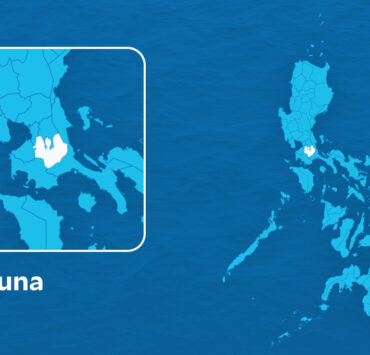Underwater structures, barriers seen in Panatag

The Philippine Navy has spotted barriers near Panatag (Scarborough) Shoal while looking into reports about underwater structures in the area, its West Philippine Sea spokesperson Rear Adm. Roy Vincent Trinidad said on Tuesday.
At a press briefing in Camp Aguinaldo, Trinidad said that members of the Northern Luzon Naval Command “noticed the barriers in front of Scarborough Shoal” during a recent maritime inspection.
He added that they were also verifying certain reports of structures underwater, although he did not rule out the possibility that these could be “remnants” of old structures in Panatag.
Trinidad recalled that in 1997, there was a marker—a steel structure—erected by China in the shoal that was blown up by members of the Philippine Navy.
There were also “building blocks” noticed there back when the United States still maintained military bases in the country. Trinidad said that at the time, Panatag was being used as a bombing range by United States and Philippine military troops.
“We are checking the latest report that these structures were spotted—they could be remnants of the old structures that were there on Bajo de Masinloc,” he told reporters.
Panatag, also known as Bajo de Masinloc, serves a traditional storm shelter for fisherfolk across Luzon.
But since China took over the shoal in 2012, it has enforced what experts call an “exclusion zone enforcement” around the area, denying fishers access.
Risk of escalation
Trinidad also warned that China’s actions in the West Philippine Sea are raising the risk of escalation as China Coast Guard (CCG) and maritime militia vessels continue to carry out coercive and aggressive maneuvers near Philippine-held features, including Pag-asa Island and Panatag.
Beijing claims sovereignty in almost the entire South China Sea, but Manila brought the matter to an international court, which ruled in favor of the country’s sovereign rights in 2016.
The arbitral tribunal also declared Panatag Shoal a traditional fishing ground for the Philippines, China and Vietnam.
“The Armed Forces of the Philippines raised the alarm years ago when we started monitoring the illegal presence of the [People’s Liberation Army Navy], the Chinese Coast Guard, and the maritime militia,” Trinidad said. “So long as [Chinese] presence will remain there, the potential for escalation due to their coercive, aggressive actions will always be there.”
Trinidad confirmed that a Philippine Coast Guard (PCG) vessel encountered “coercive, aggressive and dangerous actions” by the CCG near Sandy Cay, a sandbar three to four nautical miles from Pag-asa Island in the Kalayaan Island Group.
“Western Command is monitoring this situation. We have informed the National Maritime Council (NMC) and higher headquarters of the latest developments on Pag-asa Island,” he said.
Trinidad said another incident occurred on Oct. 13 near Bajo de Masinloc, where CCG vessels conducted a “show of water cannon force” during a Kadiwa program organized by the Bureau of Fisheries and Aquatic Resources (BFAR) and the PCG.
‘Unacceptable, dangerous’
“There was a show of a water cannon demonstration by the Chinese Coast Guard but no aggressive action was conducted against the BFAR and the PCG ships,” he said.
He emphasized that the use of water cannons as weapons at sea was “unacceptable” and “dangerous.”
“Water cannons are used by ships out at sea to help fight fires, not to endanger lives,” Trinidad said. “This is an unacceptable maritime practice by the Chinese Coast Guard to intimidate other claimant countries in the South China Sea.”
On Oct. 12, a CCG vessel fired its water cannon at and then rammed into BRP Datu Pagbuaya, one of three BFAR ships providing protection for local fishermen on Pag-asa Island. No one was hurt, but the BFAR vessel sustained slight damage. —WITH A REPORT FROM CHARIE ABARCA

















